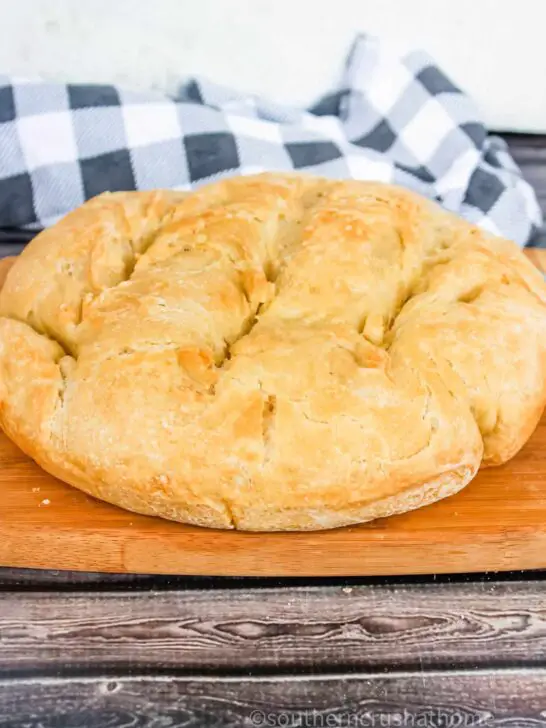Want to ditch the store-bought bread and make your own homemade loaf? You’re not alone! Many people assume baking bread is a daunting task, but trust me, this easy Dutch oven bread recipe is anything but complicated. In fact, it’s so simple that anyone can do it. With minimal effort and time required, you’ll be rewarded with a deliciously fresh loaf perfect for sandwiches, toast, or just snacking on its own. Ready to give it a try? Let’s get started!
As someone who loves quick and easy recipes, I’m thrilled to share this no-fuss Dutch oven bread recipe that requires minimal effort and yields amazing results. By using a Dutch oven, you’ll skip the tedious kneading process and have more time for the things that matter. No more sacrificing precious hours in the kitchen – just follow these simple steps and enjoy your freshly baked loaf!
equipment needed
When it comes to cooking, having the right tools can make all the difference. A cast iron Dutch oven is a staple in many kitchens, as its even heat distribution and versatility make it perfect for slow-cooking stews, braises, and roasts. But that’s not all – a wire rack provides a convenient way to air-dry delicate foods like cookies or bread, while plastic wrap keeps leftovers fresh by preventing moisture from entering the container.
A sharp knife is essential for any kitchen, allowing you to chop, slice, and dice ingredients with ease. Meanwhile, a wooden spoon is a classic choice for stirring and serving up your culinary creations. For larger meals, consider using a baking sheet or sheet pan to cook multiple items at once, and don’t forget a cutting board to prep your ingredients before cooking.
what is a dutch oven?
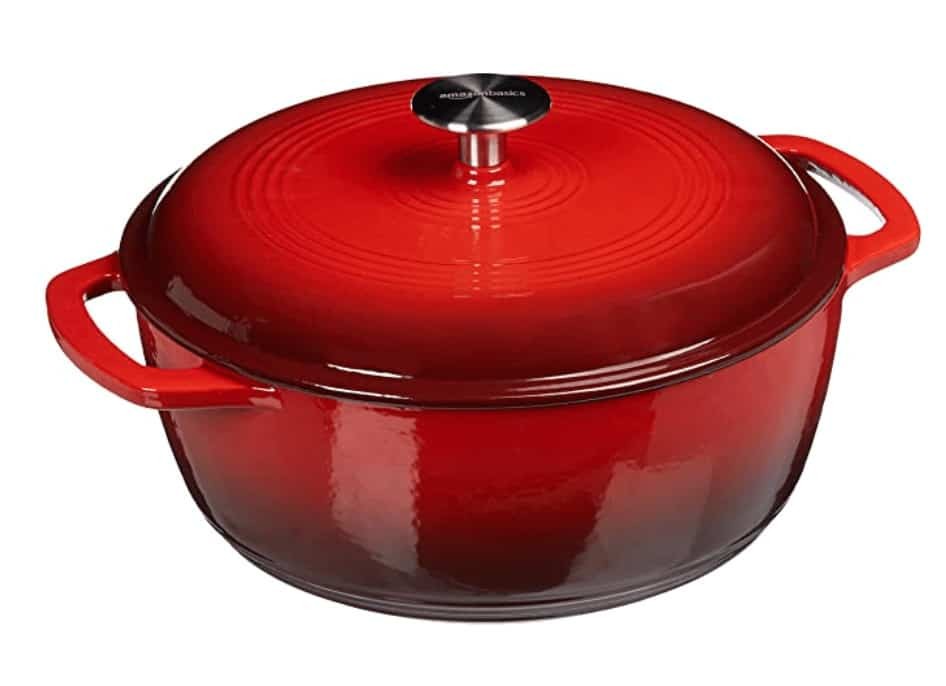
A Dutch oven, specifically a cast iron one, is characterized by its robust construction and generous capacity, capped off with a snug-fitting lid. The unique properties of heated cast iron enable it to reach incredibly high temperatures and maintain them for an extended period, making it an ideal choice for no-knead bread recipes. Notably, the size of the Dutch oven will directly impact the final dimensions of the loaf, regardless of whether you’re working with a small or large model.
what does a dutch oven do for homemade bread?
When you use a Dutch oven to bake bread, the pot’s unique ability to trap heat and moisture creates an environment that’s tailor-made for producing perfectly cooked loaves. This setup allows for even rising, browning, and crisp crust formation – resulting in mouthwatering, freshly baked bread every time. If you’re eager to experience the magic of Dutch oven breadmaking for yourself, look no further! Try out this simple yet impressive recipe today.
How to make No Knead Dutch Oven Bread
For novice bread enthusiasts, these straightforward, no-knead recipe guidelines offer a stress-free entry point into the world of artisanal baking.
Step 1.
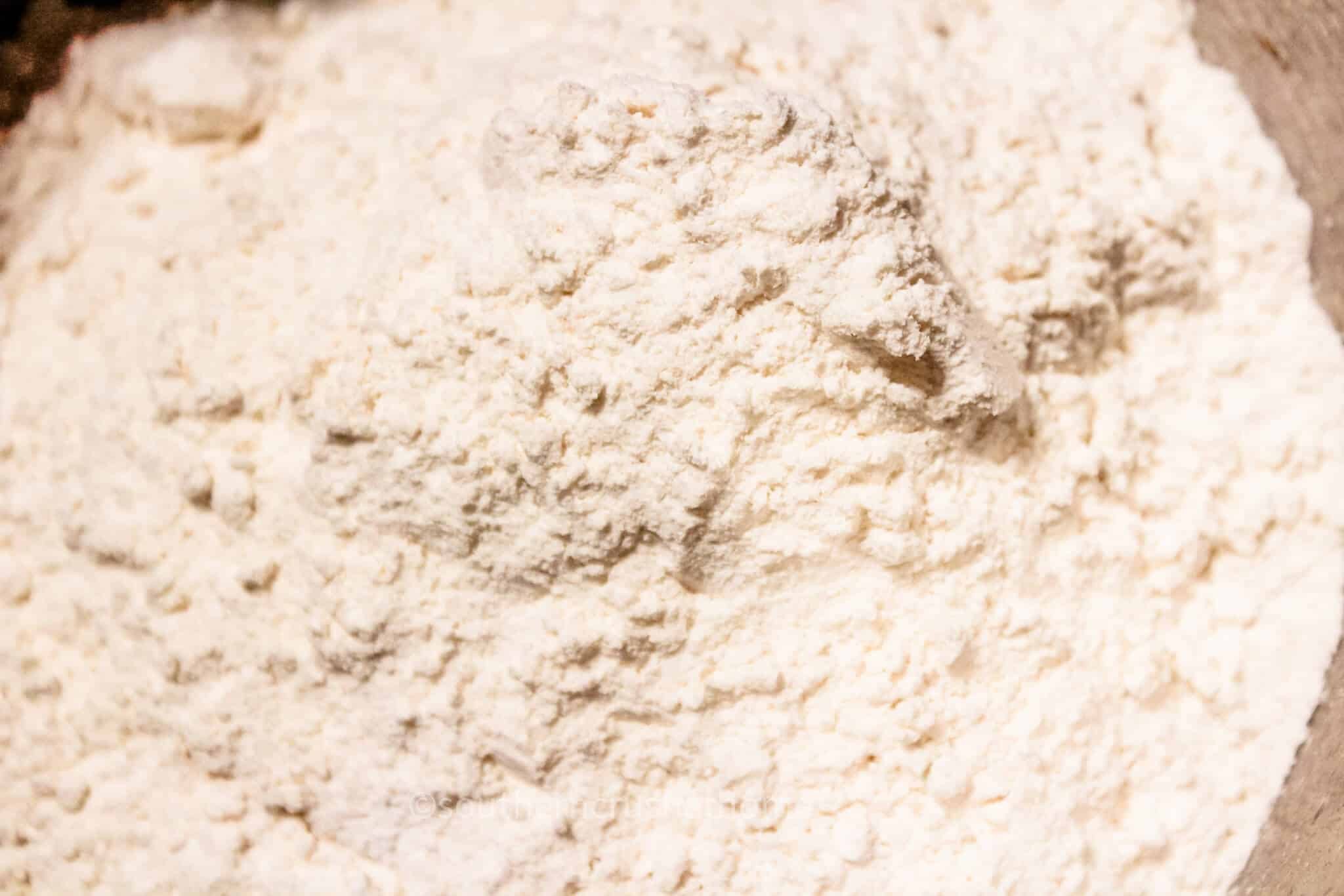
Combine water, instant yeast, salt, and your preferred bread flour or whole wheat flour in a large mixing bowl. As you start stirring, the ingredients will come together to form a sticky and shaggy dough. If needed, gradually add more flour while ensuring the consistency remains slightly wet rather than dry.
Step 2.
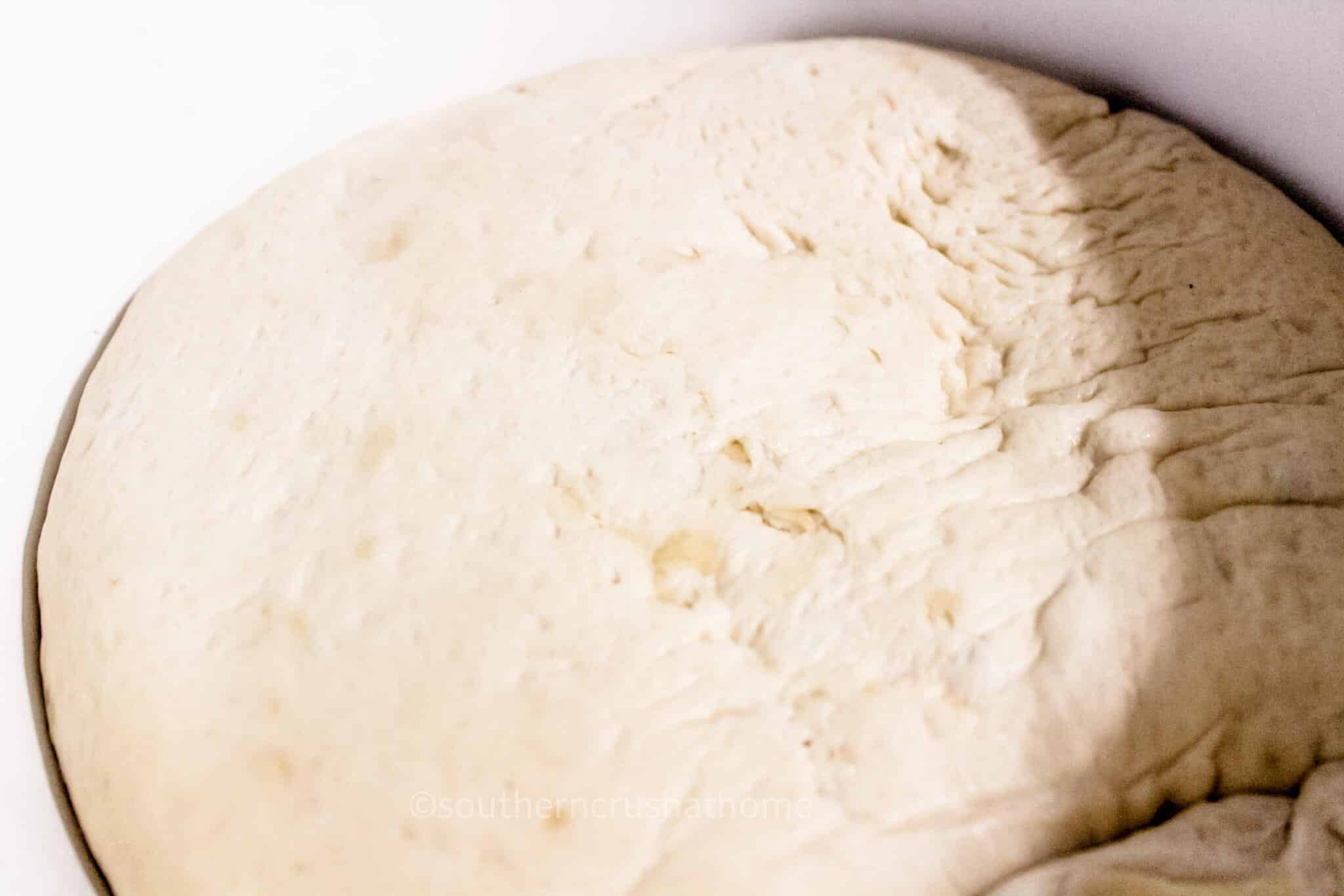
To achieve a perfectly crusty loaf, gently drizzle olive oil over the dough. Next, cover the unbaked bread with plastic wrap, leaving no excess material hanging off the edges, and allow it to sit at room temperature on your kitchen counter overnight. This will give the active dry yeast ample time to ferment, causing the dough to rise and develop a rich aroma.
The following morning, remove the plastic wrap and preheat your oven to 350 degrees Fahrenheit, ensuring your homemade bread emerges piping hot and golden brown.
Step 3.
Preheat your oven by placing the cast iron Dutch oven inside. Allow it to heat up for 30 minutes before carefully removing it with oven mitts. Next, crank up the temperature to 450°F and transfer the hot pot to a wire rack. To prevent sticking and make cleanup easier, lightly mist the exterior with olive oil or cooking spray. Be cautious, as the Dutch oven will be extremely hot at this point.
Step 4.
Begin by moistening your hands with water, then use them to gently scoop out the dough from its bowl. Next, transfer the risen dough to a preheated Dutch oven, ensuring it’s seated comfortably within the pot. With the lid in place, bake the bread for 30 minutes, allowing the heat and moisture to work their magic. After this initial 30-minute period, remove the lid and continue baking for an additional 15 minutes, or until the bread has achieved a golden brown hue.
Keep a watchful eye on it through the oven door as it transforms before your eyes. Once the time is up, permit the bread to cool completely within the Dutch oven. After resting for 10 minutes, carefully remove the finished loaf from its cozy home and admire your handiwork.
Slice and enjoy homemade bread!
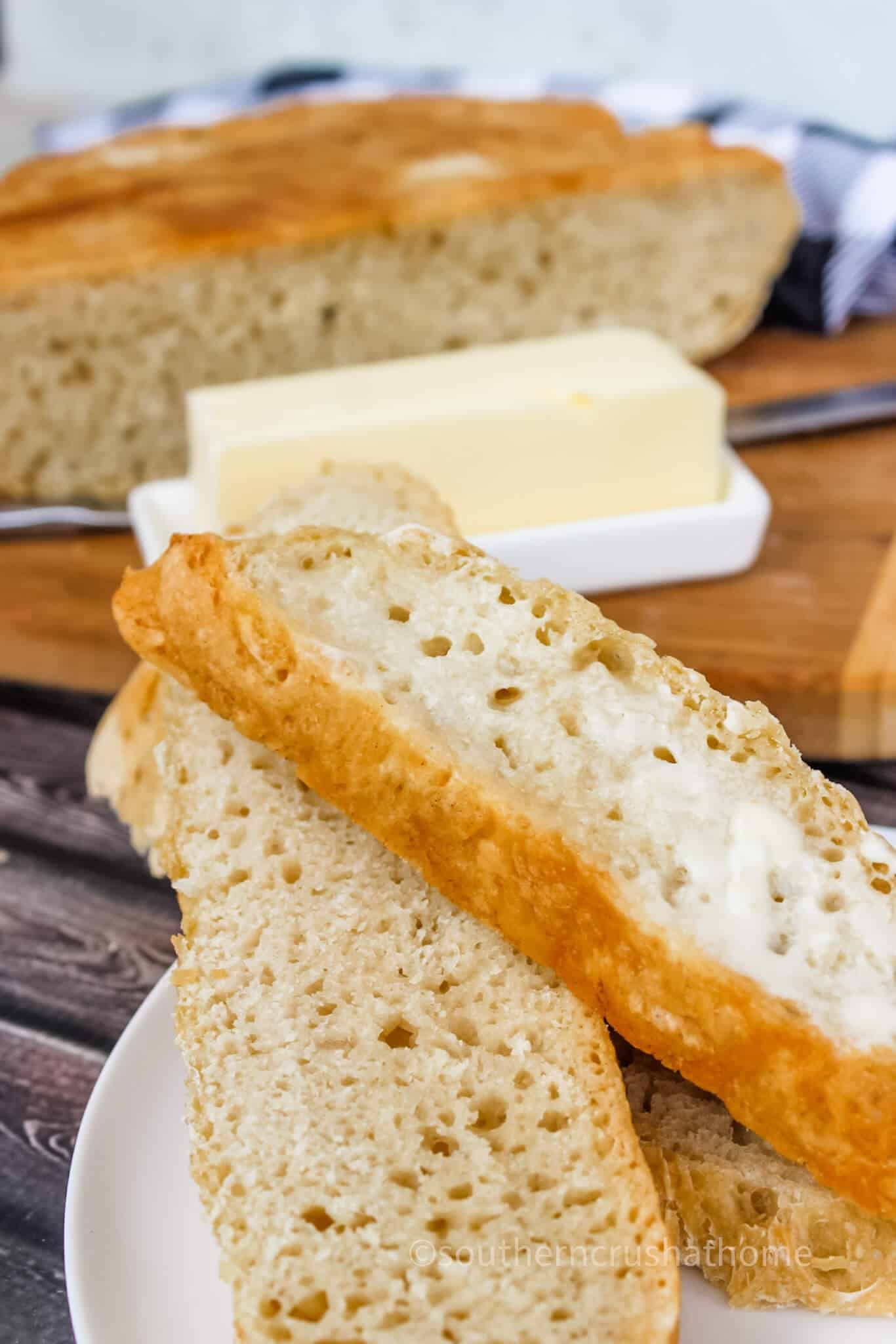
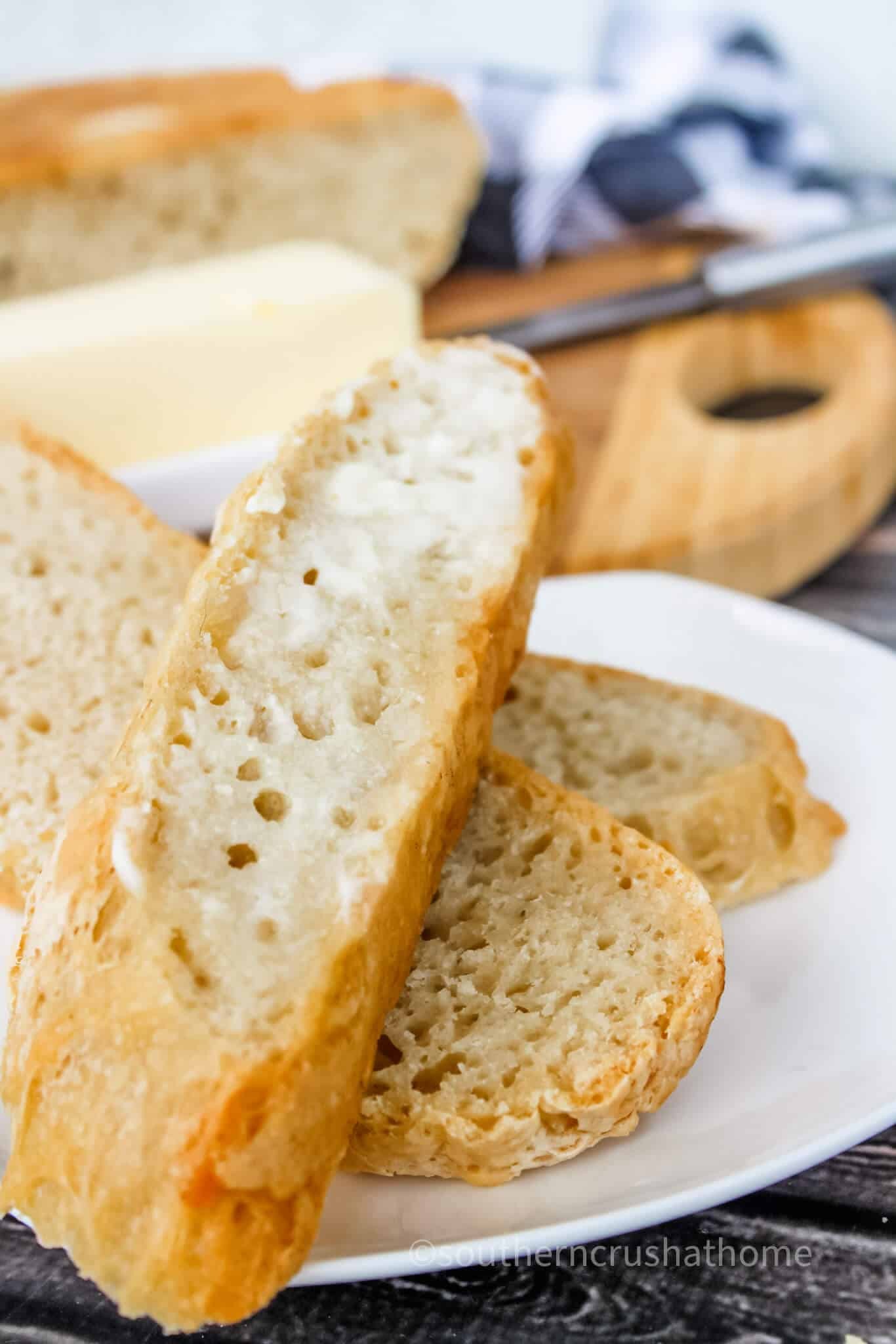
Get ready to indulge in the simplicity and satisfaction of baking your own no-knead homemade moist bread. The joy of creating something from scratch is unmatched, and this easy Dutch oven bread recipe makes it accessible to anyone. Imagine spreading salted butter on a warm slice of freshly baked golden brown goodness, still radiating heat from within. It’s hard not to salivate at the thought! Gone are the days of tedious hours spent waiting for dough to rise and kneading it by hand.
Yet, you’ll still enjoy the rich flavors and textures that homemade breads are famous for. Feel free to experiment with sourdough or artisan variations on this recipe, or try out a different size Dutch oven to hone your new baking skills.
how do you store homemade bread?
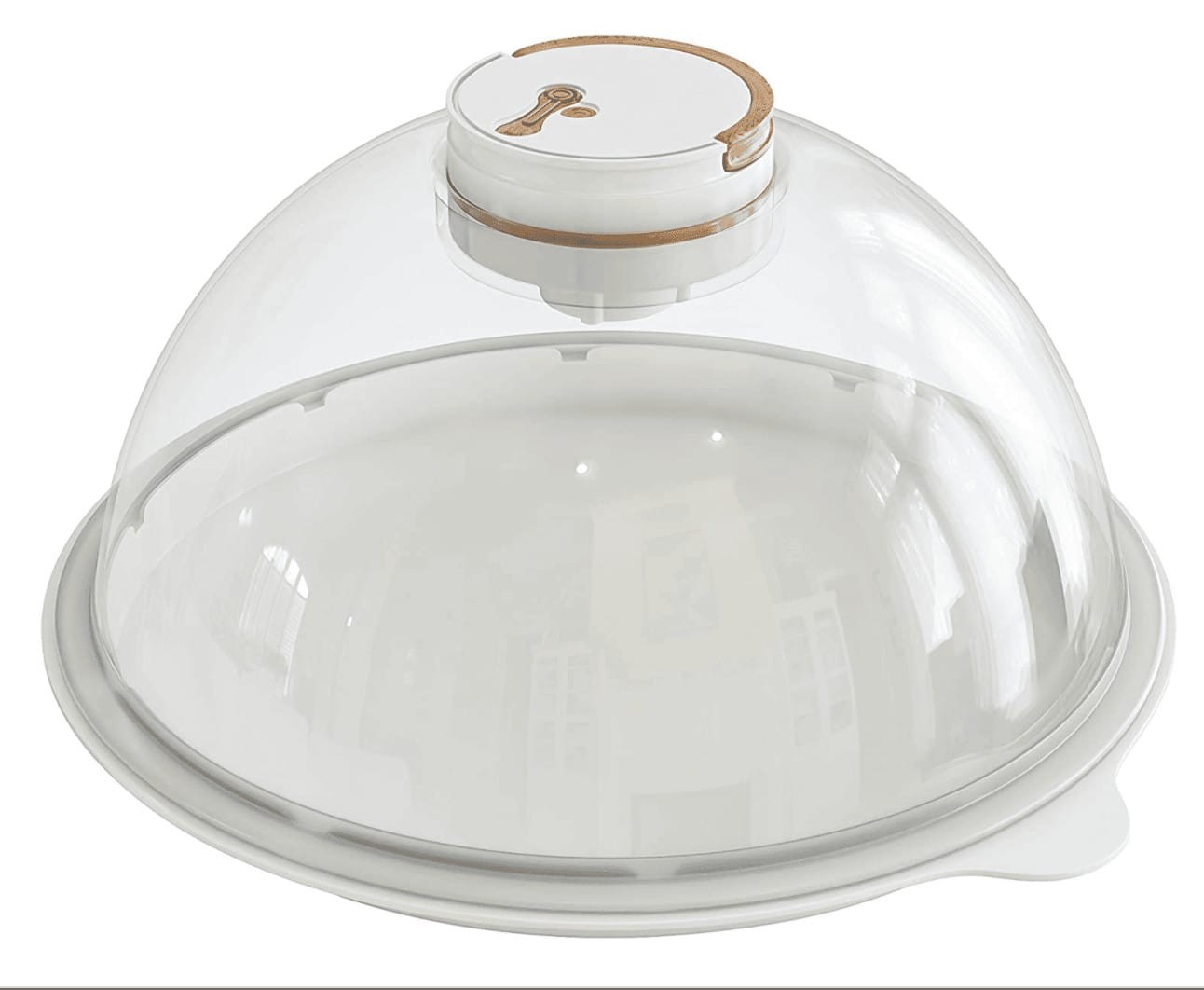
When it comes to storing your freshly baked dutch oven bread, you’re in luck because it’s a breeze! Simply wrap the bread tightly in aluminum foil or plastic wrap and place it in an airtight container like the one recommended below. Store it in the refrigerator to keep it fresh for up to five days. Alternatively, if you don’t plan on devouring it within that timeframe, consider freezing it for up to three months.
tips for baking bread in a dutch oven
Do you need to grease a Dutch oven when baking bread?
When it comes to baking bread in a Dutch oven, it’s essential to resist the temptation to grease the vessel beforehand. The high heat involved can cause any added fats to burn off, imparting an unpleasantly charred flavor to your finished loaf.
Should you bake bread on parchment paper in the dutch oven?
When preparing your Dutch oven for baking, consider utilizing parchment paper to both line the vessel and facilitate transferring the dough to a bread stone, if desired. Not only does this method prevent the dough from sticking to the surfaces involved, but it also streamlines the overall process by minimizing cleanup and potential mess.
Do you leave the lid on the Dutch oven when baking bread?
The secret to achieving the ideal crust on your homemade bread lies in the clever use of a Dutch oven’s lid. By trapping steam from the dough, the lid helps create a perfectly baked loaf. To take it to the next level, try removing the lid for the final 15 minutes of baking, allowing the top to brown nicely without drying out the bread.
Variations of Homemade knead bread and no knead Breads
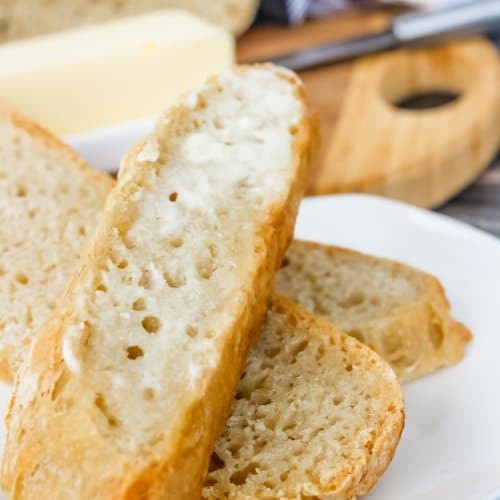
With the endless possibilities of homemade bread, it’s no wonder people get excited about experimenting with different types. From Dutch oven bread, which yields a crispy crust and fluffy interior thanks to its unique cooking method, to sourdough bread, which gets its tangy flavor from a special starter, each variation offers a distinct twist on traditional bread making.
Then there’s artisan bread, characterized by high-quality ingredients and a rustic appearance that’s perfect for serving with soups or stews. And finally, brioche, which is rich and buttery due to the generous use of eggs and butter. When deciding which type to try, consider your pantry staples and personal preferences – you might be surprised at how easily one becomes your new favorite.
As you gain experience, you’ll discover that each variation has its own set of techniques and ingredients to master, but with a little practice, you can create delicious homemade breads that will impress anyone.
Homemade Dutch Oven Bread Recipe
Transform your baking routine with this simple yet flavorful no-knead homemade bread recipe that can be effortlessly made in a Dutch oven. By skipping the kneading process, you’ll not only save time but also preserve the rich, nuanced flavors that make homemade bread so special.
Equipment
Instructions
Combine water, yeast, salt, and flour in a large mixing bowl, stirring until the flour is well incorporated and appears shaggy and sticky. Gently drizzle olive oil over the dough to enhance its texture and aroma. Cover the bowl and allow the mixture to rest at room temperature overnight, allowing the natural fermentation process to begin. Preheat your oven to 350 degrees Fahrenheit before placing a Dutch oven inside. Allow it to heat up for 30 minutes.
Next, carefully remove the Dutch oven from the oven and increase its temperature to 450 degrees Fahrenheit. To prevent sticking, lightly drizzle olive oil around the rim of the pot. Using moist hands, scoop out the dough from the bowl and gently drop it into the preheated Dutch oven. Bake the bread with the lid on for 30 minutes before removing it and baking for an additional 15 minutes. After a 10-minute resting period, carefully remove the bread from the oven and slice it to enjoy.

